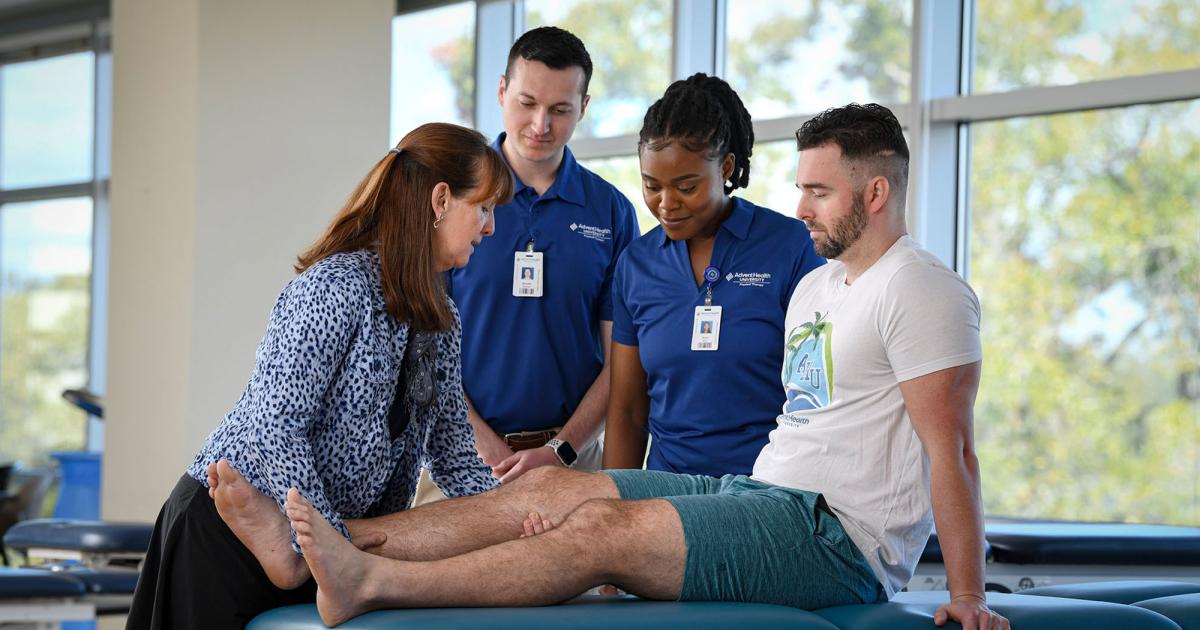Discovering the Necessary Practices of Physical Therapy for Better Mobility
Physical Therapy plays a vital duty in boosting wheelchair and physical function. It includes various techniques tailored to satisfy private demands. Secret elements consist of workout programs, manual Therapy, and equilibrium training. These approaches not just boost strength and adaptability yet likewise aid stop future injuries. Comprehending how each aspect contributes to much better mobility can expose much concerning the transformative power of physical Therapy. What approaches are most efficient in fostering lasting independence?
Recognizing the Role of Physical Therapy in Mobility
While many individuals may ignore the relevance of physical Therapy, it plays a significant function in enhancing movement and overall physical feature. Physical specialists utilize various methods to assess and boost motion capabilities in patients of any ages. They concentrate on recovering, preserving, and promoting suitable physical feature, usually adhering to injuries, surgical procedures, or chronic conditions. By employing hands-on hand-operated Therapy, healing exercises, and modalities like ultrasound or electrical stimulation, therapists aid decrease pain and improve strength, versatility, and sychronisation.

Customized Workout Programs for Individual Requirements
Customized exercise programs are essential in physical Therapy, as they begin with personalized evaluations that determine specific needs and goals. Progression tracking and changes assure that each program progresses to fulfill the altering abilities of the individual. Additionally, a variety of workout techniques can be employed to enhance involvement and performance in rehab.
Individualized Objectives and analyses
Individualized evaluations play a necessary role in establishing reliable workout programs that satisfy individual demands. By evaluating the client's physical capabilities, constraints, and specific health and wellness problems, physiotherapists can develop customized plans targeted at enhancing movement. These analyses frequently include an extensive testimonial of clinical background, practical motion screenings, and strength examinations. Each client's one-of-a-kind objectives, such as restoring function after injury or enhancing sports efficiency, are thought about in this process. This tailored technique assurances that the suggested exercises straighten with the person's way of life, choices, and healing goals. Ultimately, tailored analyses promote a much more targeted intervention, raising the chance of successful results in recovery and advertising general well-being in patients going through physical Therapy.
Progression Monitoring and Adjustments
Effective development tracking is vital in the evolution of workout programs made for individual demands. By methodically keeping track of client performance and end results, therapists can identify locations of improvement and adjust treatments as necessary. Normal analyses enable the modification of exercise regularity, type, and strength, guaranteeing that each program continues to be straightened with the individual's recuperation goals. Comments from patients additionally plays a key role, as it gives insights right into their challenges and experiences, enabling therapists to fine-tune methods. This dynamic procedure not only improves motivation yet likewise cultivates a sense of ownership in patients, making them active individuals in their recovery trip. Inevitably, effective monitoring and timely changes add substantially to achieving optimal movement outcomes.
Varied Workout Methods Used
Recognizing that each client has one-of-a-kind requirements and goals, physical Therapy practices offer a range of exercise methods to guarantee detailed recovery. These techniques include strength training, flexibility exercises, balance training, and cardio conditioning, customized particularly to the person. Strength training may involve resistance bands or weights, while versatility workouts commonly include extending methods. Balance training helps boost security, crucial for preventing falls, particularly in older adults. Aerobic conditioning boosts cardiovascular health and total endurance. By assessing each person's problem and progress, therapists can customize these programs to enhance recuperation. This personalized strategy guarantees that people not only reclaim mobility yet likewise boost their overall functional capabilities, adding to a greater top quality of life.
Handbook Therapy Methods to Minimize Pain
While pain can usually stem from different underlying problems, hands-on Therapy methods have obtained recognition for their ability to offer relief and advertise recovery. These hands-on approaches, which consist of methods such as joint mobilization, soft tissue control, and myofascial launch, are made to reduce discomfort and recover practical movement. By targeting particular locations of stress, physical specialists can attend to discomfort at its resource, enhancing flow and lowering muscular tissue tightness.
Furthermore, manual Therapy methods facilitate the body's all-natural recovery procedures by enhancing versatility and wheelchair, which can be particularly valuable for people recovering from injuries or surgical treatments - englewood physical therapy clinic. Research study indicates that these approaches might likewise improve general patient contentment by giving prompt discomfort relief, enabling patients to engage even more fully in rehab exercises. Consequently, hands-on Therapy stays an essential component of physical Therapy, assisting people gain back control over their movement and lifestyle
The Relevance of Adaptability and Extending
Adaptability and stretching play an essential duty in preserving total physical wellness and improving sports efficiency. These techniques enhance the series of movement in joints, which is crucial for carrying out everyday tasks and sports activities effectively. By consistently including extending into a routine, people can lower the risk of injuries, as versatile muscles and ligaments are less vulnerable to pressures and tears. In addition, versatility aids in muscular tissue recovery post-exercise, advertising faster recovery and reducing soreness.
Additionally, stretching can boost blood circulation, leading to much better nutrient distribution to muscles and enhanced overall feature. It additionally adds to better position by relieving stress in the muscles, consequently reducing the probability of discomfort and pain. Overall, prioritizing adaptability and extending is crucial in physical Therapy, as it lays the structure for enhanced wheelchair and practical abilities, benefiting individuals of every ages and activity degrees.
Reinforcing Workouts to Assistance Movement
Structure on the foundation established by flexibility and extending, enhancing workouts are essential for boosting total activity and security. These exercises target particular muscle mass groups, promoting muscle mass development, endurance, and i loved this coordination. By involving in dynamic resistance training, individuals can efficiently boost their stamina, which directly adds to enhanced functional movement.
Usual reinforcing exercises consist of bodyweight motions, resistance band exercises, and weight-lifting, tailored to individual capabilities and recovery objectives. It is crucial for these exercises to be integrated slowly, guaranteeing that strategy and form are prioritized to protect against injury.
Physiotherapists typically create personalized reinforcing programs that line up with a patient's distinct needs, attending to any kind of weaknesses or inequalities. Additionally, strengthening exercises play an important function hurting monitoring, as stronger muscles can relieve anxiety on joints and surrounding cells. Inevitably, an all-around strategy to enhancing fosters better independence and enhances the lifestyle for people recovering from injury or managing chronic conditions.
Equilibrium and Control Training
Equilibrium and coordination are important elements of physical Therapy, adding considerably to total capability and injury avoidance. Various techniques can be used to boost coordination, allowing people to reclaim confidence in their movements. Understanding the importance of balance exercises is important for those seeking to improve their physical abilities and preserve self-reliance.
Importance of Equilibrium Workouts
While lots of individuals may forget the significance of balance exercises, they play a vital role in enhancing overall physical wellness and stopping injuries. These exercises enhance proprioception, sychronisation, and security, which are essential for everyday activities. As people age, the risk of drops rises, making balance training critical for preserving freedom and mobility. Regular technique of equilibrium exercises reinforces the muscle mass around joints, decreases the possibility of strains, and sustains better body understanding. By incorporating balance training right into physical Therapy regimens, people can experience enhanced useful efficiency and a better of life. Ultimately, focusing on equilibrium exercises promotes strength versus injuries and grows a durable structure for withstanding physical well-being.
Techniques for Sychronisation Enhancement
Effective sychronisation training is crucial for enhancing general electric motor skills and physical performance. Techniques such as proprioceptive neuromuscular facilitation (PNF) are frequently utilized to enhance the body's ability to notice its placement precede. Equilibrium boards and security rounds are used to create and test core security, promoting better control. Furthermore, agility drills, including ladder workouts and cone drills, enhance speed and accuracy in motion. Incorporating rhythmic workouts, such as dance description or martial arts, can also advertise sychronisation with repeated motion patterns. In addition, specialists might make use of visual and auditory signs to sharpen reflexes and response times. By incorporating these varied methods, physiotherapists can effectively facilitate enhanced sychronisation, eventually adding to enhanced wheelchair and functional independence.
Methods for Ongoing Movement Upkeep
How can individuals guarantee sustained mobility as they age or recuperate from injury? To keep wheelchair, a diverse approach is necessary. Regular exercise, consisting of strength training, versatility workouts, and cardiovascular exercises, assists protect muscle mass and joint function. Participating in low-impact tasks, such as swimming or biking, can minimize stress and anxiety on joints while advertising endurance.
Incorporating balance workouts, like tai chi or yoga, enhances security and lowers autumn threat. Additionally, people should prioritize routine exams with healthcare professionals to monitor physical changes and readjust workout regimens accordingly.

Regularly Asked Inquiries
Exactly how Long Does a Typical Physical Therapy Session Last?
A normal physical Therapy session lasts between 30 to 60 mins (physical therapy englewood co). The period can vary based on private demands, therapy objectives, and specific conditions being resolved, guaranteeing customized care for ideal healing and mobility renovation
Can Physical Therapy Assist With Chronic Discomfort Administration?

What Credentials Should a Physical Therapist Have?
A physical therapist should have a Medical professional of Physical Therapy (DPT) degree, state licensure, and usually board accreditation in a specialized area. Continuing education and learning and hands-on clinical experience better improve their credentials and performance in client care.
Is Physical Therapy Covered by Insurance Policy?
Physical Therapy insurance coverage differs by insurance policy company and strategy. Several policies include treatment, yet specifics frequently depend on variables like diagnosis, referral demands, and whether the therapist is in-network or out-of-network.
Exactly how Frequently Should I Participate In Physical Therapy Sessions?
Commonly, clients ought to participate in physical Therapy sessions 2 to 3 times a week, relying on their certain condition and therapy objectives. A healthcare copyright can supply personalized referrals based upon individual development and demands.
Physical Therapy plays an important duty in enhancing mobility and physical feature. While lots of people may ignore the relevance of physical Therapy, it plays a significant role in improving wheelchair and overall physical function. Customized workout Click This Link programs are vital in physical Therapy, as they begin with individualized evaluations that determine specific needs and objectives. By examining the patient's physical capacities, limitations, and specific health problems, physical specialists can produce customized plans intended at improving wheelchair. A physical specialist must possess a Medical professional of Physical Therapy (DPT) level, state licensure, and often board accreditation in a specialized location.